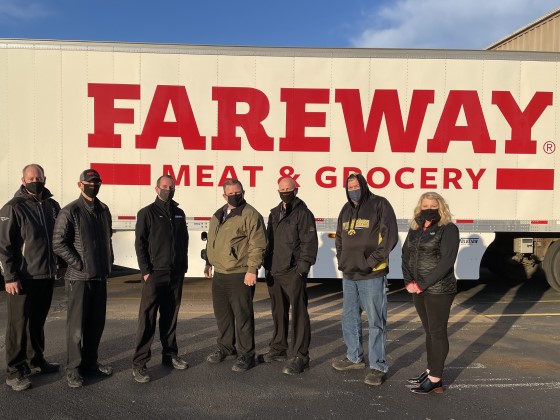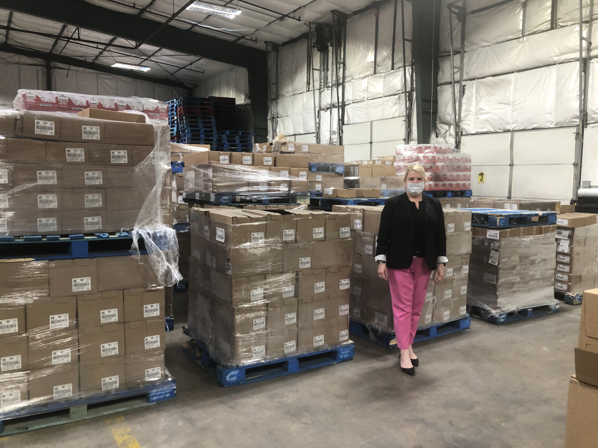Nobody likes the thought of food ending up in a landfill. According to the USDA, between 30 and 40% of food grown, processed, and transported in the United States – the equivalent of around 130 BILLION POUNDS – will never be consumed.
That’s why River Bend Food Bank works with major food producers, manufacturers, and retailers to rescue good, safe, surplus food that would otherwise go to waste and shares it with food-insecure families in communities across our 23-county service area.
Donations of surplus food help fulfill the Food Bank’s mission of leading the community-wide effort to end hunger in eastern Iowa and western Illinois. Keeping this quality food out of waste streams and landfills helps not only our environment but also the donor, who may realize tax benefits for their generosity, as well as saving on disposal costs. Most importantly, they are providing those in need with the nutritional benefits of fresh produce, meat, dairy, deli items, and both shelf-stable and frozen foods.
River Bend Food Bank has the facilities and equipment to store, maintain, transport, and distribute dry, frozen, refrigerated, and prepared food products. We have 60,000 square feet of warehouse space, including 10,000 square feet of cooler and freezer storage.
One call to the River Bend Food Bank and your food donation will support a network of hunger-relief partners across 23 counties.
SOURCING FOOD: FROM NEIGHBORHOOD GROCERS TO FEDERAL PROGRAMS
How does River Bend Food Bank get enough food to distribute? Most of the food sent out to our hunger-relief partners across the region comes from donations by people, businesses, and farmers. Food comes from:
- Food Drives: Food drives provide flexibility and variety for the Food Bank. By donating food from home that would otherwise be thrown away, church groups, social clubs, businesses, and service groups help reduce food waste and give pantries a wider selection of foods to select for the people they serve.
- Farmers and local businesses: River Bend Food Bank has relationships with local farmers and grocers, who donate surplus food when they can’t sell all of what they produce. These donations provide fresh produce and seasonal items to give guests healthy options at the pantries they visit.
- Manufacturers and distributors: the Food Bank also receives surplus food donations from distribution centers and local food manufacturers. These donations can be small – a few boxes of mislabeled cereal, or large – like a truckload of hams. These donations range in size and frequency but provide millions of meals every year.
FOOD PURCHASES
To make sure our hunger-relief partners have all the foods needed to support the people they serve, River Bend Food Bank also works with local and regional suppliers to purchase foods like fresh produce, dairy products, and frozen proteins.
Because the Food Bank has relationships with suppliers and retailers, we can often purchase food at a much lower cost than simply going to the grocery store. This helps us provide up to FIVE meals for every $1 donated, and allows us to regularly stock foods that are culturally appropriate or part of specific medical diets.
FOOD FROM FEDERAL PROGRAMS
The United States Department of Agriculture (USDA) provides billions of meals to our neighbors facing hunger each year. The USDA purchases food from farmers and delivers the food to food banks for distribution in their communities. The USDA’s programs are among the most reliable food sources for food banks, providing 2.5 billion meals each year in the United States.
THANK YOU TO OUR FOOD DONOR PARTNERS!
STAY CONNECTED
JOIN OUR EMAIL LIST
Get the latest news and updates, see upcoming events and volunteer opportunities, and be the first to learn about new programs and services!













